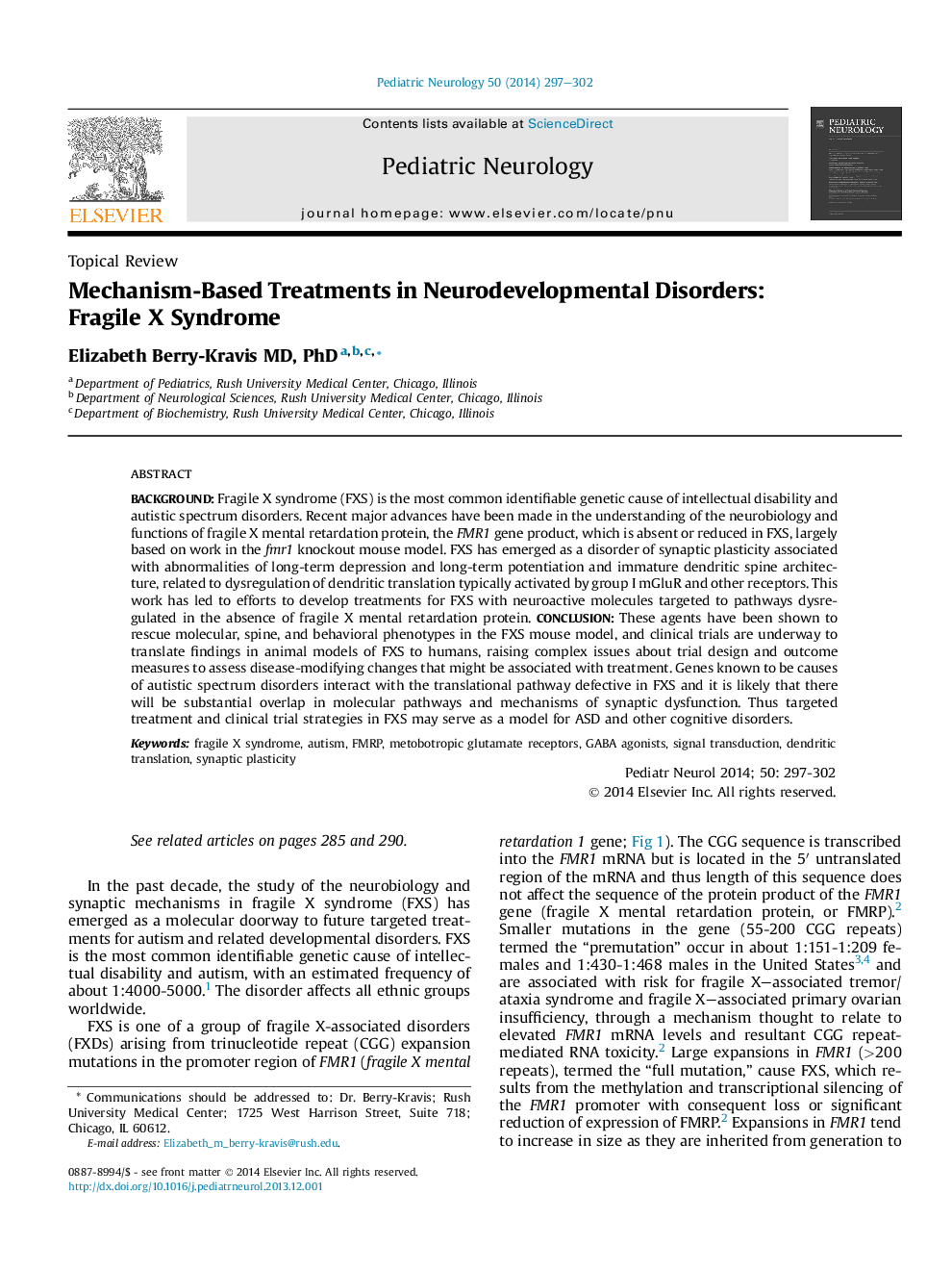| Article ID | Journal | Published Year | Pages | File Type |
|---|---|---|---|---|
| 6042369 | Pediatric Neurology | 2014 | 6 Pages |
BackgroundFragile X syndrome (FXS) is the most common identifiable genetic cause of intellectual disability and autistic spectrum disorders. Recent major advances have been made in the understanding of the neurobiology and functions of fragile X mental retardation protein, the FMR1 gene product, which is absent or reduced in FXS, largely based on work in the fmr1 knockout mouse model. FXS has emerged as a disorder of synaptic plasticity associated with abnormalities of long-term depression and long-term potentiation and immature dendritic spine architecture, related to dysregulation of dendritic translation typically activated by group I mGluR and other receptors. This work has led to efforts to develop treatments for FXS with neuroactive molecules targeted to pathways dysregulated in the absence of fragile X mental retardation protein.ConclusionThese agents have been shown to rescue molecular, spine, and behavioral phenotypes in the FXS mouse model, and clinical trials are underway to translate findings in animal models of FXS to humans, raising complex issues about trial design and outcome measures to assess disease-modifying changes that might be associated with treatment. Genes known to be causes of autistic spectrum disorders interact with the translational pathway defective in FXS and it is likely that there will be substantial overlap in molecular pathways and mechanisms of synaptic dysfunction. Thus targeted treatment and clinical trial strategies in FXS may serve as a model for ASD and other cognitive disorders.
